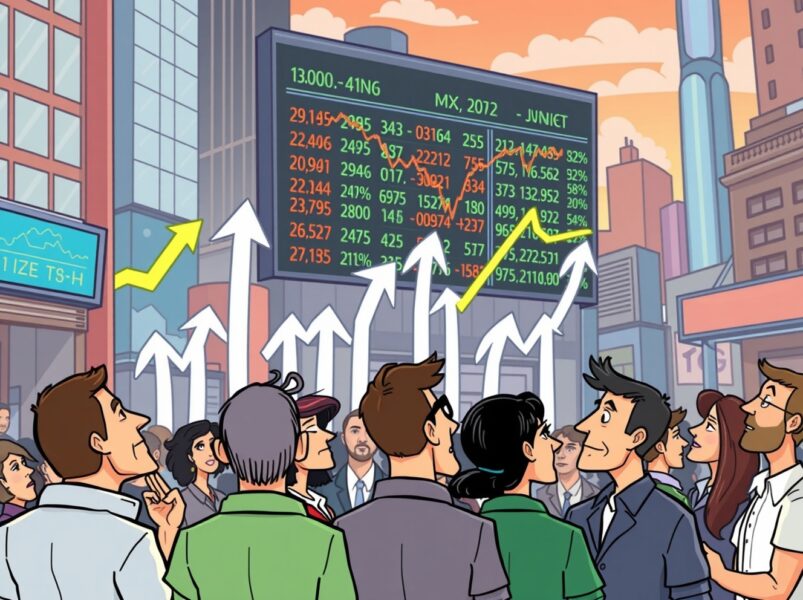The suitcoiners are in town.
From a low-key, circular podium in the middle of a lavish New York City event hall, Strategy executive chairman Michael Saylor took the mic and opened the Bitcoin Treasuries Unconference event. He joked awkwardly about the orange ties, dresses, caps and other merch to the (mostly male) audience of who’s-who in the bitcoin treasury company world.
Once he got onto the regular beat, it was much of the same: calm and relaxed, speaking freely and with confidence, his keynote was heavy on the metaphors and larger historical stories. Treasury companies are like Rockefeller’s Standard Oil in its early years, Michael Saylor said: We’ve just discovered crude oil and now we’re making sense of the myriad ways in which we can use it — the automobile revolution and jet fuel is still well ahead of us.
Established, trillion-dollar companies not using AI because of “security concerns” make them slow and stupid — just like companies and individuals rejecting digital assets now make them poor and weak.
“I’d like to think that we understood our business five years ago; we didn’t.”
We went from a defensive investment into bitcoin, Saylor said, to opportunistic, to strategic, and finally transformational; “only then did we realize that we were different.”
Michael Saylor: You Come Into My Financial History House?!
Jokes aside, Michael Saylor is very welcome to the warm waters of our financial past. He acquitted himself honorably by invoking the British Consol — though mispronouncing it, and misdating it to the 1780s; Pelham’s consolidation of debts happened in the 1750s and perpetual government debt existed well before then — and comparing it to the gold standard and the future of bitcoin. He’s right that Strategy’s STRC product in many ways imitates the consols; irredeemable, perpetual debt, issued at par, with the yield fluctuating around the fixed income. The difference is that instead of being backed and issued by the British government and managed by the Bank of England, STRC is issued and managed by Strategy, a private business intelligence company turned proto-bitcoin bank. (And the Bank didn’t micromanage the interest rate to target a specific yield.)
We’re in the first year of reinventing the financial system, Saylor concluded.
“We say that Bitcoin miners recycle stranded energy; well, bitcoin treasury companies recycle stranded capital.”
Michael Saylor pointed to pension funds and money market mutual funds and said, “more than two-thirds of the capital is locked up in structured institutions right now — it’s capital sitting in a bank, a pension fund, an insurance fund, a retirement fund, an institutional investment fund.”
All that could be freed, the bitcoin treasury company story goes, to be intermediated between the old world’s incessant desire for “yield” and the new bitcoin world that Michael Saylor and Strategy is busy building.
Michael Saylor thinks that fixing the money happens by fixing all the other money-adjecent industries: finance, regulation, corporate governance, security markets. He remarked, unironically, that during the various gold standards, credit on gold got bigger than the gold market itself. Implication: there’s plenty more paper bitcoin to come.
It’s a terrible role model, given that self custody, seizure resistance and unstoppable transfers are what bitcoin does so well over gold. Centralized markets and paperized gold is what broke the old world’s “perfect money.”
Bitcoin Treasuries: Walking A Tightrope
Toward the end, we got a nice, little dig at some rival treasury companies not doing a good job.
“There’s a certain amount of money that’ll come to you, that’s easy to get, that’s just not good for you… it’s hard to do the things that are going to create massive shareholder value for your company. It’s easy to get big and do things that basically transfer your equity and your collateral to an investor.”
We used to dream of liberating money from the paper money system we sleepwalked into during the 20th century. Here we are in the 21st, our best and brightest minds — most of them in this very room — trying their hardest to make paper out of bitcoin.
It’s a nice vision if it works; if it doesn’t, it’ll be disastrous for the orange dream.
Source: https://bitcoinmagazine.com/industry-events/michael-saylor-pushes-digital-capital-narrative-at-bitcoin-treasuries-unconference


